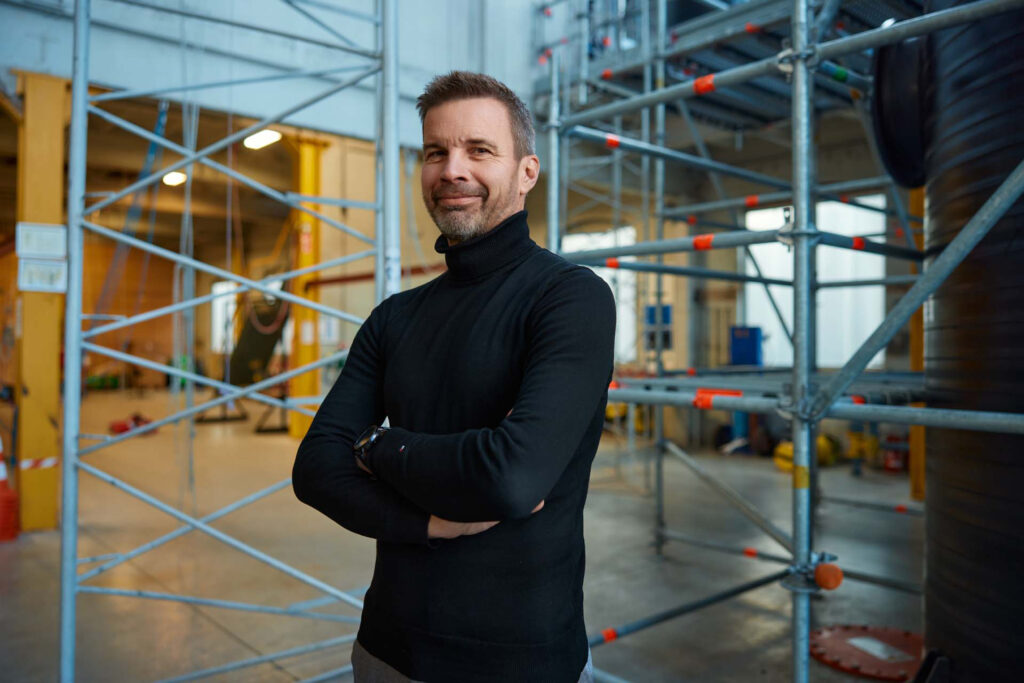Assessment Guideline 59935 for Work Safety on Roofs
July 29, 2024Facilities for work safety on flat roofs often amount to nothing more than provisional measures. After all, what requirements must these facilities meet? KOMO Assessment Guideline 9935: Flat Roof Fall Protection, offers clarity for client as well as designers and contractors. We asked Eurosafe’s QHSE Manager, Cas de Roos, about his experiences with this assessment guideline, “Indispensable for anyone who has to deal with work safety on flat roofs.”
Cas de Roos knows the dangers involved in roof work. He used to be a foreman, building executor and planner. Due to his practical knowledge and academic background, in 2009 he ended up at SGS INTRON Certification, specialised in building product and building process certification. ‟My work included responsibility for the process assessment guidelines ‘flat roofs’ and ‘permanent roof safety’ in the position of product manager, auditor and inspector. In 2018, my expertise in roof safety brought me into contact with Eurosafe, still known back then as Eurosafe Solutions. ”After years of assessing the quality of products and processes, I was ready to take on full responsibility for this within an organisation,” Cas explains.
From his position at SGS INTRON, Cas was also involved in Assessment Guideline 9935: Flat Roof Fall Protection. This was in fact developed by SGS INTRON, in cooperation with Stichting Nivoh (National Institute for Safety at Height) and market parties. Meanwhile, he is closely involved in the Assessment Guideline from his position as QHSE Manager for Eurosafe.

Safety Risks
Eurosafe supplies and installs permanent safety systems for flat roofs. The company also provides services such as the inspection and maintenance of climbing and safety equipment, carrying out Risk Inventory & Evaluation, training and education.
For work safety on roofs the occupational hygiene strategy should also be followed. This is the hierarchical system of risk management measures. “The safest option is to never step onto the roof, but that is rarely realistic. In turn, you can fence off the roof edge but the Building Inspectorate or architect is often not happy with that. You can also raise the parapet of a flat roof to a minimum height of 1 metre. The next step is to install a cable system at the same distance from the fall hazard (roof edge) that the user(s) can secure themselves to. This is always preferable to separate anchor points because the user avoids having to disconnect and/or adjust the line length.
Scope
KOMO® Assessment Guideline 9935 is an assessment guideline for the design, installation, inspection and maintenance of permanent fall prevention devices on flat roofs. Cas explains: “Not all companies carry out all disciplines. For example, there are some that only design or install. To provide for these differences, KOMO® Assessment Guideline 9935 has been drawn up in a modular way. ‘Part 00’ is the general part and is compulsory for everyone. ‘Part 01’ concerns the design and ‘Part 02’ the installation of permanent safety devices. Finally, there is ‘Part 03’ for inspecting and maintaining existing safety facilities. A company can certify for at least one of the three specific parts within the scope or opt for combinations.”
Why Assessment Guideline 9935?
The Decree on Building Works in the Residential Environment (Dutch abbreviation: Bbl) sets requirements for the safe maintenance of buildings. For example, safety devices must be securely fastened to the surface. The waterproofing must also be fail-safe if systems are attached to the roof structure through the roof covering. Cas responds: “So this applies to new build. It is nice for a quality assurer. However, even more important is the owner of a building because he/she is the individual legally responsible for fall protection on the building and on existing buildings! Fall protection installed under Assessment Guideline 9935 certification provides clarity and covers risks for the client, because an independent party carries out checks on the process by means of office audits, as well as at the work location where fall protection is installed.”
Even though Assessment Guideline 9935 is an important instrument to improve safe working on roofs, this assessment guideline is less or possibly completely unknown to many clients. “Increasing awareness will allow more clients to prescribe this assessment guideline in the specifications. The technical committee of Assessment Guideline 9935 is currently working on a revision. Revision will include processing of user experiences in order to improve the accessibility of Assessment Guideline 9935. We hope to have a new version ready during the course of this year.”
Text: Frank de Groot, engineer, this article appeared in BouwTotaal, page 17, dated March 2024

